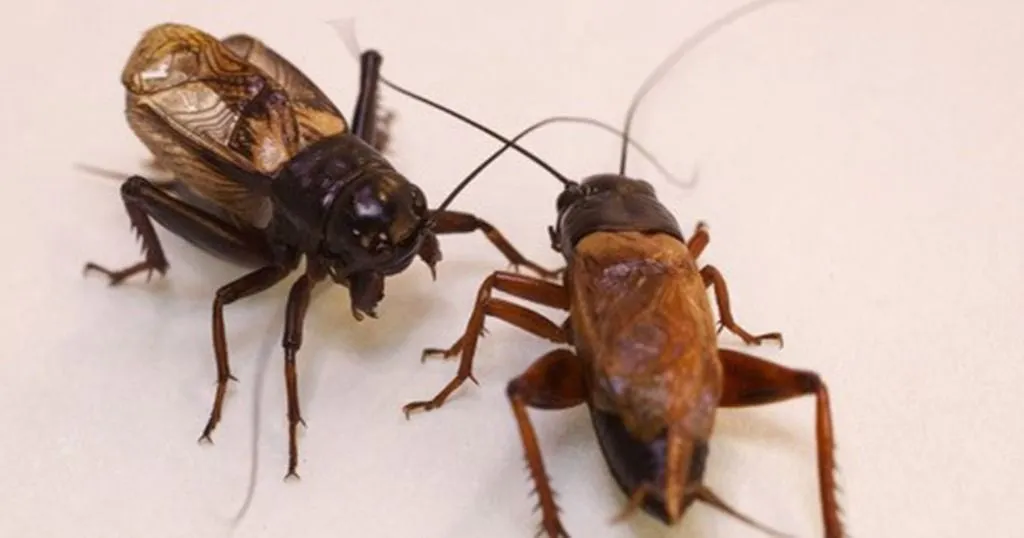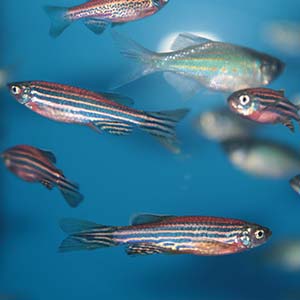A new fish on the block: Japanese medaka in toxicology studies

We are all very familiar with zebrafish as a model species in neuroscience research. Today, let's talk about another fish, the Japanese medaka.
Posted by
Published on
Fri 11 Sep. 2015
Topics
| EthoVision XT | Toxicity | Video Tracking | Zebrafish |
By now, we are all familiar with the zebrafish as a model species. It has many advantages over rodent models and thus has complemented and/or replaced many studies that use the traditional mouse or rat. But today, let’s talk about another fish: the Japanese medaka (Oryzias latipes). It has much in common with the zebrafish, such as external embryogenesis and transparency in early life stages, and genetically speaking is also complementary to zebrafish (see Porazinski et al., 2011).
Environmental toxicology studies with medaka fish
A research group from the University of Bordeaux (France) has published a number of toxicology studies using these fish. In a 2013 study, they reported on the effects of various polycyclic aromatic hydrocarbons (PAH), a class of organic environmental pollutants that have been identified as being carcinogenic as well as mutagenic. Researchers tested the toxicity of PAH as can be found in different compositions (sediment, heavy oil, and light crude oil) by investigating the effects on survival, hatching delay, hatching success, developmental abnormalities, larvae swimming activity, and DNA damage.
Light-dark activity
Swimming activity was measured using the DanioVision Observation Chamber and EthoVision XT video tracking software. Specifically, they tested for visual motor response in 4 dph (days post hatching) larvae in 46-well plates. The 50-min test cycle started with 20 min of darkness, followed by 10 min in the light, and ended with another 20 min in darkness. Velocity, distance swum, and mobility, as measured with EthoVision XT, were the parameters of interest.
Hyperactivity due to PAH
All larvae followed the same pattern of activity in the dark-light-dark cycle: a stabilization of activity during the first dark period, a slight increase during lights on, and then a sharp increase immediately after the lights went off. This activity stabilized over the course of ten minutes to levels similar to those in the first dark phase. However, PAH contamination did significantly affect behavior: exposed fish swam faster and over longer distances. In addition, the researchers found that environmental concentrations of PAH delayed hatching, increased developmental abnormalities, and altered DNA.
Effect of psychiatric drug residues
In 2014 the same researchers investigated the effects of often used psychotropic drugs, such as fluoxetine and oxazepam. As these pharmaceuticals are used more and more to treat humans, environmental levels also increase. Similar to the previous study, several tests were conducted investigating drug effect on Japanese medaka behavior. Locomotion was assessed in a slightly different protocol, this time using a 10 min dark – 10 min light – 10 min dark – 10 min light cycle. In addition to the activity parameters used previously, now time spent in the peripheral zone was also taken into account. The different drugs had different effects during the light period, with oxazepam inducing hyperactivity, while fluoxetine induced hypo-activity. Almost all drugs tested induced larvae to spend more time in the periphery; in rodents this is commonly referred to as thigmotaxis. However, these effects were only noticeable in moderate to high concentrations (relative to normal environmental concentrations in rivers and sewages).
Hypo-activity due to BaA
This year a study was published testing the effects of another PAH, the carcinogenic environmental pollutant BaA, on 2 dph medaka larvae. At a low concentration, BaA was found to induce developmental defects, DNA damage, and behavioral disturbances in medaka larvae. Using a similar dark-light cycle to the locomotor experiment in 2014, the 2015 study demonstrated that exposure to the PAH BaA strongly decreased activity in medaka larvae.
Taken together, these 3 studies indicate that environmental pollutants and psychiatric drug residues can have severe impact on the development and behavior of Japanese medaka larvae, which can present a risk to wild fish species in urban or industrial areas.
References
- Le Bihanic, F.; Clérandeau, C.; Le Menach, K.; Morin, B.; Budzinski, H.; Cousin, X.; Cachot, J. (2013). Developmental toxicity of PAH mixtures in fish early life stages. Part II: adverse effects in Japanese medaka. Environmental Science and Pollution Research, 21(24), 13732-43.
- Chiffre, A.; Clérandeau, C.; Dwoinikoff, C.; Le Bihanic, F.; Budzinski, H.; Geret, F.; Cachot, J. (2014). Psychotropic drugs in mixtures alter swimming behavior of Japanese medaka (Oryzias latipes) larvae above environmental concentrations. Environmental Science and Pollution Research, doi:10.1007/s11356-01-3477-4.
- Le Bihanic, F.; Sommard, V.; Perrine, L. de; Pichon, A.; Grasset, J.; Berrada, S.; Budzinski, H.; Cousin, X.; Morin, B.; Cachot, J. (2015). Environmental concentrations of benz[a]anthracene induce developmental defects and DNS damage and impair photomotor response in Japanese medaka larvae. Ecotoxicology and Environmental Safety, 113, 321-328.
- Image by Seotaro (Own work) [GFDL or CC BY-SA 3.0], via Wikimedia Commons.
Related Posts

The Noldus SfN 2023 recap

Dynamic winners and sluggish losers

